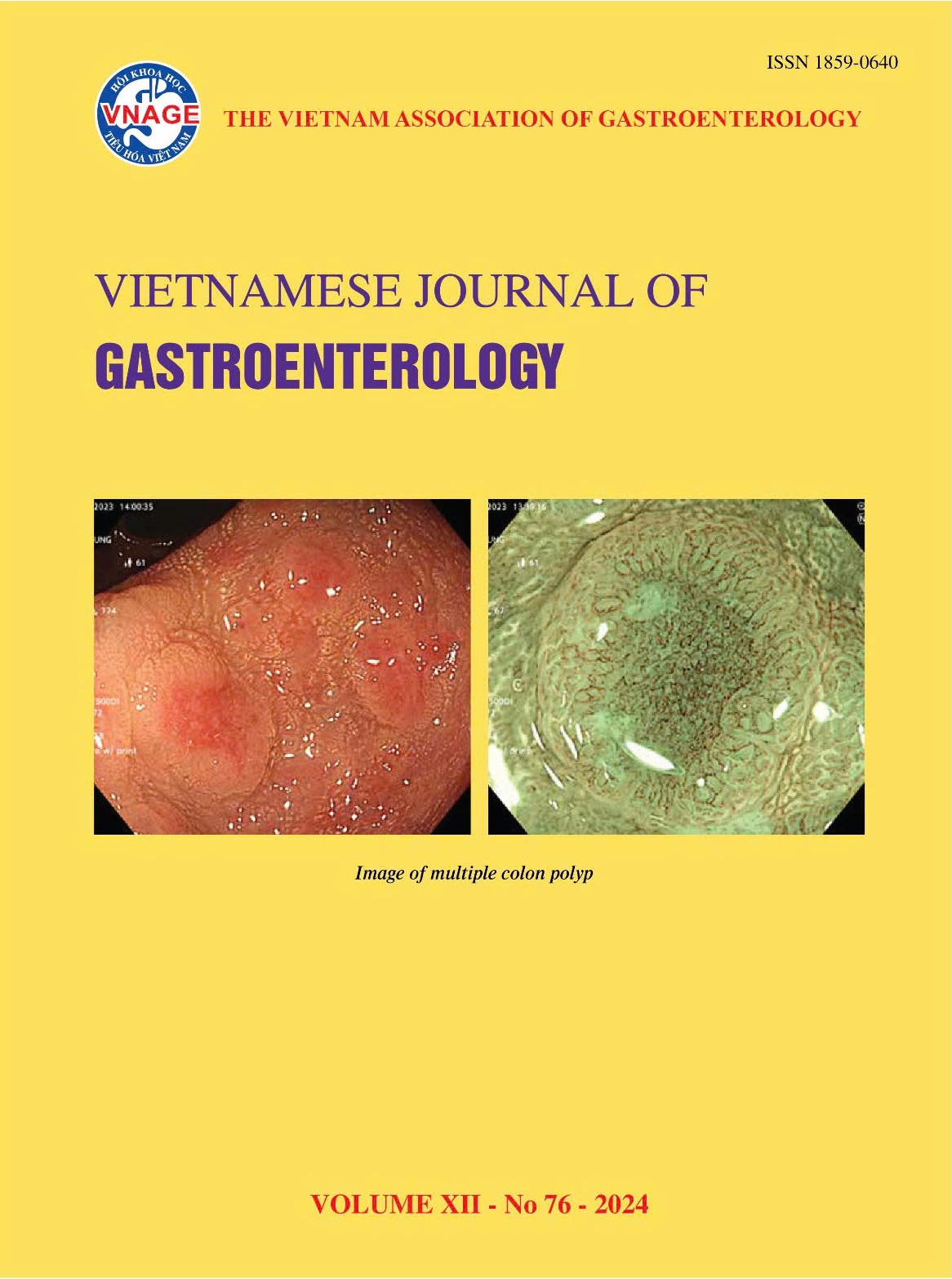Endoscopic and pathological characteristics of large colorectal polyps in patients with hereditary cancer syndromes
DOI:
https://doi.org/10.63583/g6f8fb67Từ khóa:
Colorectal cancer, polyp, hereditary factorsTóm tắt
Objective: To describe the endoscopic and histopathological characteristics of large colorectal polyps in patients with hereditary cancer risk factors. Subjects and method: A cross-sectional descriptive study with a control group was conducted using convenience sampling on 127 patients diagnosed with large colorectal polyps from January 2020 to January 2024. Result: The mean age of the hereditary group was lower than that of the non-hereditary group (52.3 ± 10.1 vs. 60.8 ± 12.5 years). The gene mutation rate in the hereditary group was 52.9%, significantly higher than in the non-hereditary group (3.2%). Polyps in the hereditary group were more frequently located in the right colon (55.6%) and had a flat morphology (31.1%). The mean polyp size was larger in the hereditary group (16.8 ± 4.2mm vs. 13.5 ± 3.6mm). The rate of adenoma, especially tubulovillous/villous type, was higher in the hereditary group (77.8% and 48.9%, respectively). High-grade dysplasia was more common in the hereditary group (40.0% vs. 15.0%). There was no significant difference in the rates of carcinoma in situ and submucosal invasive carcinoma between the two groups. Patients with FAP had a higher number of polyps, and higher rates of villous morphology and high-grade dysplasia compared to those with Lynch syndrome. Conclusion: The adenoma rate in hereditary colorectal polyps was 77.8%, with the tubulovillous/villous type accounting for 48.9%. High-grade dysplasia was significantly more frequent in the hereditary group than in the non-hereditary group (40.0% vs. 15.0%, p<0.05).
Tài liệu tham khảo
1. Morgan E., Arnold M., Gini A. et al (2023). Global burden of colorectal cancer in 2020 and 2040: incidence and mortality estimates from GLOBOCAN. Gut, 72(2), 338–344.
2. Alzahrani S.M., Al Doghaither H.A., Al-Ghafari A.B. (2021). General insight into cancer: An overview of colorectal cancer (Review). Mol Clin Oncol, 15(6), 271.
3. Al-Kawas F., Gupta N., Benjamin S.B. et al (2008). Large Colorectal Polyps: Endoscopic Resection and Rate of Malignancy. Does Size Matter?. Gastrointestinal Endoscopy, 67(5), AB325.
4. Park W., Kim B., Park S.J. et al (2014). Conventional endoscopic features are not sufficient to differentiate small, early colorectal cancer. World J Gastroenterol, 20(21), 6586-6593.
5. Nguyễn Trường Sơn, Hoàng Mai Hương, Đỗ Khắc Trường (2021), Nghiên cứu tỷ lệ polyp đại trực tràng ung thư theo kích thước, Tạp chí Y học Việt Nam, 507(2). 126-129.
6. Lynch H.T., Snyder C.L., Shaw T.G. et al (2015). Milestones of Lynch syndrome: 1895-2015. Nat Rev Cancer, 15(3), 181-194.
7. Jass J.R., Cottier D.S., Pokos V. et al (1997). Mixed epithelial polyps in association with hereditary non-polyposis colorectal cancer providing an alternative pathway of cancer histogenesis. Pathology, 29(1), 28-33.
8. Roberts M., Marshall M.L., Webb E.M. et al (2018). Polyp burden in Lynch syndrome patients ascertained via multigene panel testing. JCO, 36(4_suppl), 596-596.









